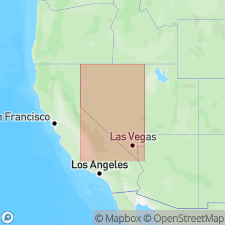
- Usage in publication:
-
- Pyramid Formation
- Modifications:
-
- Named
- Dominant lithology:
-
- Basalt
- Latite
- Diatomite
- Conglomerate
- Breccia
- AAPG geologic province:
-
- Southern Oregon basin
Summary:
Pyramid Formation. Exposed in (type section) and directly north of Mullen Pass. Unit found also in first east-trending canyon south of Quail Creek Ranch, in SE/4 sec. 7, T. 23 N., R. 22 E. Divided into three mappable units (descending): (1) scoriaceous dark-gray to black basalt, tuff, breccia; (2) white diatomite with fossil plants, and rare thin sandstone and shale beds; and (3) yellow-brown basalt, tuff, breccia, rare conglomerate of rhyolite and dacite clasts at base. Total thickness at type is 234 m. Unconformably overlies early Miocene (20 Ma) quartz dacite stock unit [informal], unconformably underlies middle Miocene (14.8 Ma at base) Chloropagus Formation. Age is middle Miocene (15.6 Ma) based on biostratigraphic dating (Dalrymple, 1979), as well as stratigraphic position. Report includes geologic map and fossil lists.
Type section: in vicinity of Pyramid fossil plant locality (in S/2 sec. 4, T. 23 N., R. 21 E.) in Mullen Pass several mi west of Pyramid Lake and 0.5 mi north of State Highway 445, Washoe Co., western NV. Origin of name not stated by author, but probably named from Pyramid Lake, or town of Pyramid on lake's western shore (Axelrod, 1992).
Source: Modified from GNU records (USGS DDS-6; Denver GNULEX).
For more information, please contact Nancy Stamm, Geologic Names Committee Secretary.
Asterisk (*) indicates published by U.S. Geological Survey authors.
"No current usage" (†) implies that a name has been abandoned or has fallen into disuse. Former usage and, if known, replacement name given in parentheses ( ).
Slash (/) indicates name conflicts with nomenclatural guidelines (CSN, 1933; ACSN, 1961, 1970; NACSN, 1983, 2005, 2021). May be explained within brackets ([ ]).

